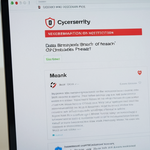
The emergence of sophisticated malware and ransomware threats has fundamentally transformed how organizations must approach cybersecurity incident management. While traditional antivirus and endpoint detection solutions provide essential baseline protection, these tools alone prove insufficient against determined threat actors who employ human-operated attack methodologies, lateral movement techniques, and data exfiltration strategies. The most effective defense against malware and ransomware attacks rests upon a structured three-phase response framework: isolation to contain the threat, eradication to eliminate all malicious artifacts, and recovery to restore systems to operational integrity. This comprehensive analysis examines these three critical steps in detail, exploring their theoretical foundations, practical implementation strategies, interdependencies, and role within broader incident response programs. Organizations that master this three-step methodology demonstrate significantly improved resilience against both commodity malware and sophisticated ransomware campaigns, reducing both the duration of attacks and the financial impact of compromises.
Foundational Principles of Malware and Ransomware Incident Response
Understanding the Evolution of Threats and Response Requirements
The landscape of malware and ransomware threats has evolved dramatically over the past decade, requiring organizations to fundamentally reimagine their incident response capabilities. Early malware attacks typically involved self-propagating worms or viruses that spread laterally across networks with minimal human intervention, creating easily identifiable signatures and behaviors that security teams could detect and remediate through conventional antivirus scanning and system reimaging techniques. Modern ransomware attacks, particularly those conducted by human-operated threat actors and organized criminal gangs, operate under entirely different principles that demand more sophisticated containment, eradication, and recovery strategies.
Contemporary ransomware attacks demonstrate several characteristics that distinguish them from earlier malware generations and that fundamentally necessitate the three-step isolation, eradication, and recovery framework. Human-operated ransomware typically begins with a lengthy reconnaissance phase during which threat actors establish persistent access to an organization’s environment, often maintaining undetected presence for weeks or months while conducting network reconnaissance and identifying high-value targets for data exfiltration. The attackers deliberately move laterally through the network, escalating privileges, compromising administrative accounts, and establishing multiple backdoors to ensure continued access even if one compromise vector is discovered and remediated. Only after sufficient access has been obtained and sensitive data has been exfiltrated do the actual encryption and ransom demands occur, meaning that the cryptographic payload represents merely the final stage of a much longer attack chain.
This evolution in threat sophistication demands that organizations embrace a cyclical, multi-phase approach to incident response rather than reactive removal-only strategies. The National Institute of Standards and Technology (NIST) incident response framework, along with the SANS Institute methodology, both recognize this reality by organizing incident response into distinct phases that collectively address prevention, detection, containment, eradication, and continuous improvement. Within this broader framework, the three steps of isolate, eradicate, and recover represent the core reactive response activities that organizations execute once a malware or ransomware incident has been confirmed.
The Relationship Between These Three Steps and Overall Incident Response
The isolation, eradication, and recovery steps must be understood as interconnected components of a larger incident response lifecycle rather than isolated activities. Proper execution of the isolation phase directly enables effective eradication, just as thorough eradication provides the foundation for safe and successful recovery. Conversely, inadequate isolation allows threats to spread and replicate throughout the environment faster than they can be eradicated, ultimately compromising the integrity of recovery efforts. The three phases thus form an integrated response capability that requires careful orchestration, meticulous documentation, and continuous communication among technical teams, management, and external stakeholders.
Within the NIST framework, these three steps collectively comprise what is termed the “Containment, Eradication, and Recovery” phase, which represents the most intensive and resource-demanding period of incident response. The SANS framework similarly structures these activities into three distinct but interdependent phases labeled Containment, Eradication, and Recovery, with specific procedures, objectives, and success criteria for each. Understanding the nuances of each phase and the dependencies between them proves critical for organizations seeking to minimize the duration and impact of malware and ransomware incidents.
Phase One: Isolation and Containment Strategies
The Strategic Importance of Rapid Isolation
The isolation phase represents the critical inflection point in any malware or ransomware incident response effort, functioning as what security professionals describe as the fire department of an organization’s defensive posture. The primary strategic objective of isolation is to immediately limit an attack’s impact before threat actors can escalate their operations, exfiltrate additional data, or expand their foothold throughout the organizational network. Every moment of delay during this phase permits attackers to conduct additional reconnaissance, compromise additional systems, encrypt more data, or establish supplementary backdoors that complicate subsequent eradication efforts.
The significance of rapid isolation cannot be overstated in the context of modern ransomware attacks. Research indicates that mean time to containment (MTTC)—the aggregate time required to detect, acknowledge, and effectively prevent further damage—directly correlates with the total financial impact of incidents. Organizations that achieve MTTC measured in hours rather than days experience dramatically reduced data loss, lower recovery costs, and diminished reputational damage compared to those with delayed containment responses. In one documented case of a major U.S. pipeline company, effective isolation and rapid response proved crucial in limiting the spread of ransomware, minimizing downtime of critical infrastructure, and preserving public trust.
Short-Term Containment Tactics
Short-term containment encompasses the urgent defensive actions that incident response teams execute immediately upon detection of malware or ransomware activity, typically within seconds to minutes of initial alert. These actions focus on preventing further spread of the threat while preserving evidence necessary for subsequent investigation and potential legal proceedings. Short-term containment represents emergency response rather than comprehensive mitigation, with the understanding that more comprehensive long-term containment strategies will follow once the immediate threat spread has been arrested.
The most fundamental short-term containment action involves isolating affected systems from network connectivity to prevent the malware from communicating with command-and-control infrastructure, receiving instructions for lateral movement, or spreading to additional systems. For ransomware specifically, immediate system isolation prevents the encryption process from impacting additional networked systems or shared storage resources, thereby reducing the total scope of data loss. Isolation can be achieved through multiple mechanisms depending on the organizational environment: endpoint detection and response (EDR) tools can quarantine endpoints through software-based network restrictions, corporate domain and virtual private network (VPN) configurations can restrict access through centralized control, or physical network disconnection—unplugging Ethernet cables and disabling Wi-Fi—may be necessary if software-based isolation proves ineffective.
When isolation must be implemented manually due to software failures or complexity, tactical decisions regarding physical system shutdown may be required. However, these decisions warrant careful consideration because powering down affected equipment destroys evidence held in volatile system memory, which can include indicators of ongoing attack activity, credential information, or command sequences necessary for forensic analysis. Organizations must balance the urgency of preventing further spread against the forensic value of preserving evidence for investigation, a tension that highlights the importance of having predefined isolation procedures documented in advance.
Beyond endpoint isolation, short-term containment often requires blocking malicious traffic at network perimeters and intermediary points. If incident response teams identify specific external IP addresses, domains, or command-and-control infrastructure associated with the attack, firewall rules can be immediately implemented to block communication with these addresses, preventing the malware from receiving instructions or exfiltrating data. For ransomware attacks leveraging known exploit kits or delivery mechanisms, intrusion prevention systems (IPS) can be configured to block known attack signatures and techniques.
Another critical short-term containment action involves account lockdown procedures, particularly for privileged accounts that may have been compromised or for user accounts identified as infection vectors. Disabling compromised user and administrative accounts prevents attackers from using these credentials for lateral movement, privilege escalation, or continued system access. However, account disablement must be orchestrated carefully to avoid inadvertently disrupting legitimate business operations or destroying evidence through the deletion of user activity logs.
Long-Term Containment Strategies
Long-term containment extends beyond the immediate crisis response timeframe, instead focusing on fundamental system remediation and environmental reconfiguration to prevent the threat actor from regaining access or reestablishing persistence. Whereas short-term containment typically executes within seconds to minutes, long-term containment strategies unfold over hours to several days as comprehensive analysis and systematic remediation activities proceed. Long-term containment aims to establish a stable environment free of attacker presence and resistant to the specific attack vectors and techniques that enabled the initial compromise.
Network segmentation and reconfiguration constitute primary long-term containment strategies. Many organizations discover during incident investigation that inadequate network segmentation permitted rapid lateral movement throughout the environment once an initial compromise occurred. Implementing or strengthening network segmentation through virtual local area networks (VLANs), virtual private networks (VPNs), and physical network architecture changes creates compartmentalization that limits threat actor movement even if individual systems become compromised. For organizations using virtualized or containerized infrastructure, micro-segmentation techniques can isolate individual applications or workloads from one another, preventing a ransomware infection on one virtual machine from automatically encrypting data on adjacent systems.
Zero trust security architecture represents an increasingly adopted long-term containment strategy that fundamentally reimagines network trust assumptions. Rather than assuming that anything within the organization’s internal network perimeter can be trusted by default, zero trust architectures operate on the principle that no user, device, or application should be trusted without continuous verification, regardless of location or prior access history. Implementation of zero trust principles involves enforcing strong identity and credential management, implementing multi-factor authentication (MFA) broadly across systems and applications, and ensuring that access is granted only to specific resources required for legitimate job functions rather than broad network access.
Credential management and password reset procedures form critical long-term containment elements. Comprehensive credential rotation across all systems affected by or potentially exposed to the threat actor becomes necessary to prevent attackers from using stolen credentials to regain access after initial containment efforts. This credential rotation must extend beyond user passwords to include service account credentials, privileged access management (PAM) account credentials, API keys, and any other credential types within the affected systems. Organizations must implement systematic password reset procedures with verification that new credentials function properly and that systems have successfully authenticated with updated credentials. Research indicates that attackers often retain multiple backdoors and credential sets even after initial access vectors have been closed, making comprehensive credential rotation essential to prevent reintrusion.
System patching and vulnerability remediation represent additional long-term containment activities that prevent threat actors from exploiting the same or similar vulnerabilities to regain access. Incident investigation necessarily includes identification of the vulnerability or misconfiguration that permitted the initial compromise, whether an unpatched software vulnerability, misconfigured cloud storage, compromised credentials due to phishing, or other attack vectors. Addressing these root cause vulnerabilities through security patching, configuration hardening, or process changes ensures that the same attack path cannot be immediately reused. Organizations should prioritize patching of vulnerabilities that were actually exploited or that could enable similar attacks before applying patches to other identified vulnerabilities.
Threat Isolation Mechanisms and Technologies
Organizations benefit from understanding the specific technical mechanisms through which different isolation strategies can be implemented, as this knowledge enables incident response teams to select isolation approaches most appropriate to their particular technological environment and threat scenario. Network isolation can be achieved through software-based mechanisms such as endpoint detection and response (EDR) quarantine features that restrict network communication at the operating system or application level without requiring physical network disconnection. This approach permits rapid isolation while preserving the ability to conduct forensic examination, retrieve additional evidence, or perform targeted malware analysis on affected systems.
Hardware-level network disconnection—physically unplugging network cables or disabling network interface cards—represents the most absolute form of network isolation, though at the cost of destroying volatile memory evidence and rendering systems temporarily unusable for investigation. For particularly sensitive systems or those suspected of being heavily compromised, immediate power-down may be warranted despite the forensic cost, as preservation of evidence becomes secondary to preventing complete network compromise and organizational-wide ransomware encryption.
Sandbox and isolated virtual environments provide alternative isolation mechanisms suitable for malware analysis and behavioral observation without exposing production networks to active threats. Security teams can deliberately introduce suspicious files or samples into isolated sandbox environments, observe their behavior, capture indicators of compromise, and extract threat intelligence without risk of escape or lateral movement to production systems. Tools such as Cuckoo Sandbox automate this process by establishing isolated Windows virtual machines within controlled Linux hosts, executing potentially malicious samples, and documenting behavioral outcomes including file modifications, registry changes, and network communications.
Phase Two: Eradication and Threat Removal
Defining Eradication Objectives and Scope
The eradication phase represents a critical transition from emergency containment response to systematic threat elimination and root cause remediation. Whereas containment focuses on limiting immediate damage and preventing further spread, eradication addresses the fundamental objective of removing all malicious artifacts from the organizational environment and eliminating the vulnerabilities that enabled the initial compromise. Effective eradication requires comprehensive understanding of the full scope of compromise, systematic identification of affected systems and malicious artifacts, and meticulous execution of removal procedures with verification that no traces of malware remain.
The eradication process operates under a fundamental principle articulated in the NIST Computer Security Incident Handling Guide: the process of eliminating root causes of security incidents must occur with “a high degree of confidence” that the adversary has been completely evicted from the environment and that vulnerabilities enabling reentry have been mitigated. This stringent standard reflects the reality that incomplete eradication permits attackers to rapidly reinitiate attacks, reestablish persistence, and cause recurrent damage. Organizations that execute incomplete eradication discover that threats resurface within days or weeks as threat actors reactivate dormant backdoors or exploit inadequately patched vulnerabilities.

Malware Removal Techniques and Approaches
Malware removal constitutes the most immediate eradication objective, requiring comprehensive identification and elimination of malicious code, unauthorized processes, malicious files, and threat actor infrastructure from affected systems. The specific techniques and approaches appropriate to a given incident depend upon factors including the malware type, extent of system compromise, organizational tolerance for system downtime, and forensic requirements for potential legal proceedings.
Automated malware removal through detection and remediation tools represents the most efficient eradication approach for straightforward malware infections limited in scope and complexity. Modern endpoint detection and response (EDR) tools, antivirus software, and specialized malware removal utilities can scan system storage for known malware signatures, suspicious files, and behavioral indicators, and can automatically quarantine or delete malicious artifacts. This automated approach minimizes manual labor requirements, executes rapidly, and scales efficiently across organizations with large numbers of affected systems.
However, sophisticated malware, particularly malware deployed by nation-state adversaries or advanced criminal organizations, often incorporates obfuscation techniques, packing mechanisms, persistence mechanisms, and rootkit-level code that resists detection and removal through conventional signature-based approaches. In such cases, manual malware removal procedures may be necessary, requiring specialized expertise in reverse engineering, malware analysis, and deep knowledge of Windows or Linux operating systems depending on the targeted platform. Security professionals conducting manual malware removal must carefully examine running processes, system services, scheduled tasks, startup locations, registry modifications, and file system artifacts to identify and document malware components before removal.
System reimaging or operating system reinstallation represents an alternative eradication approach that eliminates the uncertainty of whether all malware artifacts have been successfully removed. Rather than attempting to selectively remove malware files and artifacts while preserving legitimate system components, full system reimaging completely replaces the operating system and system software with clean versions, absolutely guaranteeing the absence of malware. Many cybersecurity professionals consider full system reimaging the most prudent eradication approach for significant malware infections or ransomware attacks given the difficulty of confirming complete malware elimination through removal-only techniques.
The decision between removal-only and reimaging approaches must account for multiple organizational factors. System reimaging provides certainty of malware elimination but requires substantially longer downtime, complex recovery procedures to reestablish user data and application configurations, and careful validation that reimaged systems possess all required updates and security patches before restoration to production. Removal-only approaches execute more rapidly but carry the risk that sophisticated malware could persist on the system, particularly rootkits or fileless malware techniques that leave minimal artifacts on disk storage. Organizations often adopt a hybrid approach: executing automated removal for most systems while reserving full reimaging for systems suspected of particularly sophisticated or deeply rooted malware infections.
Vulnerability Identification and Patching
Identifying and remediating the root cause vulnerability or misconfiguration that enabled the initial compromise constitutes an essential eradication activity, as failure to address the underlying vulnerability permits threat actors to immediately reexploit the same attack path. The vulnerability identification process begins with thorough investigation of the incident’s initial compromise vector: what specific technology, process, or human action permitted the first attacker foothold within the organization?
For incidents originating through phishing emails delivering malware, root cause remediation involves not only removing the malware payload but also implementing email security controls that prevent similar phishing emails from reaching organizational mailboxes in the future. This might involve implementing advanced email filtering with machine learning-based malicious attachment detection, implementing Domain-based Message Authentication, Reporting & Conformance (DMARC) and related technologies to prevent email spoofing, and conducting enhanced employee training to recognize phishing techniques.
For incidents exploiting known software vulnerabilities, remediation requires rapid identification of the specific vulnerability, acquisition of available security patches, testing of patches within staging environments to ensure compatibility with organizational systems and applications, and systematic application of patches across affected systems. The vulnerability patching process demands careful orchestration to ensure that patches successfully remediate vulnerabilities without introducing new incompatibilities or system instability that could disrupt business operations. Effective patching programs establish clear prioritization frameworks that focus first on vulnerabilities being actively exploited or that enable network access to critical systems, rather than attempting to patch all identified vulnerabilities simultaneously.
For incidents exploiting compromised or weak credentials, remediation extends beyond password resets to address the underlying cause of credential weakness or compromise. This might involve implementing multi-factor authentication (MFA) to prevent password-only compromise from enabling system access, implementing password managers and credential vaults that enable use of strong unique passwords without requiring users to memorize complex credentials, or addressing particular user populations requiring additional training in credential security practices.
For incidents exploiting misconfigured systems or services, remediation involves implementing secure default configurations that reduce the attack surface and prevent similar misconfigurations in the future. Misconfigured cloud storage permissions, exposed remote access services with weak authentication, or unnecessary network services running on servers represent common misconfigurations that require architectural remediation rather than simple patching. Organizations must review configuration standards, implement infrastructure-as-code approaches that enforce secure configurations consistently across systems, and conduct periodic security assessments to identify and remediate drift from secure configuration baselines.
Comprehensive System Validation and Testing
Eradication activities must conclude with rigorous validation and testing to verify that malware has been completely removed and that systems function properly with all security improvements implemented. This validation phase represents a critical quality control checkpoint before systems are restored to production and entrusted with sensitive data and critical business functions.
Malware scanning using multiple detection tools helps verify that malware has been removed, as different detection engines and scanning tools may identify threats that others miss. However, security professionals should recognize that malware scanning provides assurance but not absolute proof of malware absence, particularly against sophisticated threats employing advanced evasion techniques. Scanning results should be interpreted as indicators of whether additional investigation or reimaging might be warranted rather than as definitive proof of clean status.
Behavioral validation and system functionality testing assess whether systems function normally after eradication activities, suggesting that no malware or system corruption persists that might impair normal operations. Affected systems should be tested to verify that critical applications launch and function properly, that user data is accessible and unencrypted, that network connectivity operates as expected, and that performance characteristics align with baseline norms. Unexpected performance degradation, application failures, or user access problems may suggest that malware persists or that remediation procedures inadvertently damaged system components.
For systems that were reimaged during eradication, additional validation ensures that all required operating system updates, security patches, and application software were successfully reinstalled and that user data was properly recovered from backups. Validation procedures should include boot verification to confirm that systems start successfully, application testing to verify that key applications launch and function properly, and integrity verification to confirm that user data matches expectations and shows no signs of corruption or malicious modification.
Phase Three: Recovery and Restoration to Production
Safe Data Restoration Procedures
Recovery activities focus on restoring affected systems and data to normal operational status while maintaining absolute assurance that no malware or corrupted data persists that could compromise the restored environment. The recovery phase represents a critical trust point where organizations must have confidence that systems being returned to production will function properly without harboring lingering threats or corrupted data. Inadequate recovery procedures that restore malware-infected data or fail to validate restored system integrity can result in recurrent infections within days of restoration, necessitating additional expensive remediation cycles.
For ransomware incidents specifically, data recovery from clean backups represents the primary pathway for data restoration, as data encrypted by ransomware cannot be decrypted without possession of encryption keys that attackers deliberately retain. Organizations must maintain immutable backups that cannot be modified or deleted by threat actors, including offline backups physically isolated from production networks and cloud-based backups with immutable retention policies that prevent deletion or encryption. Recovery from compromised backups that themselves contain encrypted or malicious data can perpetuate the incident rather than resolving it, so validation of backup integrity prior to restoration proves essential.
The specific backup recovery approach must account for the scope and nature of compromise. Full system recovery from complete backup images provides comprehensive restoration of operating systems, applications, and data in a single operation, minimizing manual reconfiguration and reducing the time required to restore systems to production. However, full system recovery requires that organizations maintain complete backup copies, that sufficient storage capacity exists to manage these large backup sets, and that recovery procedures have been tested to ensure functionality. For organizations with less comprehensive backup coverage, file-level recovery through selective restoration of critical files and folders from backups offers more rapid restoration with lower storage requirements, though at the cost of greater manual effort and more granular restoration planning.
Before restoring data from backups, organizations should scan backup content with malware detection tools to identify and eliminate any malicious code that may have been inadvertently backed up prior to malware detection. Malware dwell time extending weeks or months prior to active deployment means that malware-infected data may have been included in backups created before threat detection, so backup content validation proves critical to avoiding reinfection during recovery.
Staged and Validated Restoration Workflows
Systematic staged restoration procedures minimize the risk of reintroducing undetected malware or corrupted data into the production environment while enabling continuous business operations even as systems are being restored. Rather than attempting simultaneous restoration of all affected systems, organizations should prioritize recovery based on criticality to business operations, restoring the most critical systems first while less critical systems remain offline or in recovery status. Recovery Time Objectives (RTOs) and Recovery Point Objectives (RPOs) established during business continuity planning provide guidance for this prioritization, defining acceptable downtime durations and data loss tolerances for different systems and applications.
Restoration to isolated recovery or staging environments prior to reintroduction to production networks provides an opportunity to validate restored systems without exposing production networks to potential risks. In these staging environments, security teams can verify that restored systems boot properly, applications launch and function correctly, user data is accessible and unencrypted, and no signs of malware activity exist. Only after validation confirms proper function in staging environments should systems be introduced back to production networks.
Enhanced monitoring following system restoration helps identify any residual threats or malware activity that may have been missed during eradication validation procedures. Extended monitoring periods—typically spanning days to weeks after full recovery—should focus on unusual process execution, unexpected network communications, suspicious file modifications, or other indicators of potential ongoing attack activity. Organizations should maintain heightened security alert thresholds during this post-recovery monitoring period to catch any indications of inadequately eradicated malware or attacker persistence mechanisms.
Critical Infrastructure and Continuity Considerations
Recovery planning must account for dependencies between systems and applications to ensure that restoration occurs in sequences that maintain system functionality and business operations. A database server that feeds multiple dependent applications must be restored before those dependent applications, and load balancers or network services must be properly configured before dependent clients can successfully connect. Recovery procedures should be documented as systematic workflows that establish proper sequencing and validate functional dependencies at each stage.
Business continuity and disaster recovery plans establish prioritization of critical systems that should receive fastest recovery attention to minimize business disruption. Information technology environments typically support systems with dramatically varying criticality: some systems support business-critical functions where even brief outages cause significant financial or operational damage, while others support non-critical functions that can remain offline for extended periods without substantial organizational impact. Recovery procedures should reflect these priorities, ensuring that critical systems and applications receive restoration resources and attention first while less critical systems are recovered sequentially based on available resources.
Organizations should conduct regular testing of recovery procedures to verify that documented procedures function as intended and that critical systems can be successfully restored within targeted RTOs. Recovery testing under non-emergency conditions identifies procedural gaps, missing prerequisites, or resource constraints that could impair recovery execution during actual incidents. Post-recovery validation procedures should confirm that systems have been restored to known-good configurations without malware, corrupted data, or configuration drift from secure baselines.
Integration and Coordination of the Three Phases
Dependencies and Sequential Execution
The three phases of isolation, eradication, and recovery do not execute in perfect isolation but rather depend upon and inform one another through tightly coordinated activities. Inadequate isolation permits continued malware spread that complicates subsequent eradication by expanding the number of affected systems and the complexity of the threat landscape. Incomplete eradication leaves malware artifacts or vulnerabilities that enable rapid attack recurrence, rendering recovery efforts temporary and necessitating repeated response cycles. Poor recovery procedures that restore corrupted or malware-infected data undermine all prior containment and eradication efforts, resulting in recurrent infections within the restored production environment.
The sequencing of the three phases reflects necessary dependencies: isolation must substantially complete before eradication can occur efficiently, as continued threat spread would complicate eradication efforts and potentially reinfect already-cleaned systems. Eradication must verify successful completion before recovery commences, as restoring data to systems that remain compromised would immediately reinfect the restored data. Recovery must occur only after eradication has been validated, assurance of clean backup sources has been established, and staging environment testing has confirmed proper restoration functionality.
However, aspects of these phases can proceed in parallel under appropriate conditions. While primary eradication activities focus on the most critical or most severely compromised systems, other teams may simultaneously conduct recovery planning, validate backup integrity, and prepare staging environments for subsequent recovery testing. This parallelization of appropriate activities optimizes overall incident response timelines while maintaining required logical dependencies.
Communication and Coordination Requirements
Effective execution of the three-phase response demands continuous communication among technical teams, incident management leadership, business stakeholders, and potentially external parties including law enforcement, regulatory bodies, and affected customers. The isolation phase may substantially disrupt business operations by taking systems offline, necessitating clear communication with affected business units about the rationale, expected duration, and impact of isolation activities. Management and business leaders require regular updates on incident scope, remediation progress, and estimated recovery timelines to make informed decisions about alternative operations, customer communications, and business continuity activation.
Incident response teams must maintain detailed documentation of isolation, eradication, and recovery activities for multiple critical purposes including enabling proper post-incident analysis and lessons-learned activities, supporting potential litigation or regulatory investigations, and creating institutional knowledge for future incident response activities. This documentation should capture not only what actions were taken but also when they were taken, by whom, what results occurred, and what decisions were made and the rationale supporting those decisions.
External communications regarding security incidents must be carefully managed, particularly in organizations operating in regulated industries or those with significant customer bases who may be affected by the incident. Communications with law enforcement should occur early in incident response, as many federal and state law enforcement agencies offer investigative support and threat intelligence that can accelerate incident understanding and remediation. Communications with regulatory bodies depend on applicable regulations and must occur within specified timeframes for incidents affecting regulated data or systems.

Evidence Preservation and Forensic Requirements
Throughout isolation, eradication, and recovery activities, organizations must balance the urgency of threat remediation against the need to preserve evidence that may support forensic investigation, regulatory compliance, or potential criminal prosecution. Evidence preservation priorities should be clearly defined in incident response plans established before incidents occur, as real-time decisions about evidence preservation made during crisis conditions often prioritize immediate threat elimination over evidence collection.
System imaging of affected machines prior to extensive remediation preserves forensic evidence that can be analyzed in depth during post-incident investigation without interfering with active remediation efforts. These forensic images should be created and stored according to established legal and procedural standards to maintain their evidentiary value and admissibility in potential legal proceedings. Chain of custody procedures should be implemented to document who has accessed forensic images, when, for what purposes, and with what results, establishing an auditable record of forensic evidence handling.
Organizations must consult legal counsel before destroying infected files, residual malware artifacts, or other potential evidence, as destruction of evidence relevant to regulatory investigations or criminal prosecution can expose organizations to legal liability beyond the cybersecurity incident itself. For incidents involving regulated data such as healthcare information (HIPAA), financial data (PCI-DSS), or government data (NIST SP 800-171), regulatory requirements may mandate retention of incident evidence and forensic analysis results.
Technologies, Tools, and Capabilities Supporting the Three Phases
Endpoint Detection and Response (EDR) and Network Detection and Response (NDR) Platforms
Modern endpoint detection and response (EDR) platforms provide essential technical capabilities for rapid isolation, efficient eradication, and validated recovery. EDR solutions deploy lightweight agents on endpoint devices that continuously monitor system activity, compare observed behaviors against known malware signatures and behavioral anomalies, and provide incident response teams with detailed visibility into system activity, process execution, network communications, and file modifications. During incident response, EDR platforms enable rapid isolation through quarantine capabilities that restrict network access without requiring manual intervention, facilitate eradication by identifying suspicious processes and files for removal, and provide the forensic evidence necessary to validate successful remediation.
Network Detection and Response (NDR) platforms complement EDR by providing network-level visibility into data flows, protocols, and communications patterns that may reveal attacker activity even on systems that lack EDR agents or on network segments where EDR visibility is limited. NDR platforms analyze network traffic, identify communications with known malicious infrastructure, detect indicators of compromise in network behavior, and can trigger automated responses such as blocking malicious network traffic or isolating compromised systems. The combination of EDR and NDR—often referred to as the “SOC Visibility Triad” when combined with Security Information and Event Management (SIEM) platforms—creates comprehensive visibility across endpoints, network, and centralized logging that enables efficient detection, rapid isolation, and thorough investigation of security incidents.
Security Information and Event Management (SIEM) and Extended Detection and Response (XDR)
SIEM platforms centralize logging and alerting from diverse security tools, providing security operations centers (SOCs) with aggregated visibility into security events and incidents across the entire technology infrastructure. SIEM platforms normalize and correlate logs from firewalls, intrusion detection systems, endpoint protection platforms, EDR tools, NDR platforms, cloud services, and application-specific logging, enabling security analysts to identify patterns and correlations that would be invisible in isolated data sources. During incident response, SIEM platforms provide historical context about when attacks occurred, how they propagated through networks, what systems were affected, and what data was potentially accessed or compromised.
Extended Detection and Response (XDR) platforms extend EDR and SIEM capabilities by integrating detection and response capabilities across endpoints, networks, email, cloud services, and identities, providing unified visibility and coordinated response across the entire attack surface. XDR platforms automate correlation of alerts and events across these diverse sources, reducing alert fatigue and enabling security teams to identify sophisticated attacks that might be invisible when examining individual data sources in isolation.
Backup and Recovery Technologies
Backup and recovery technologies represent foundational capabilities that enable successful recovery phase execution and support overall organizational resilience against ransomware and other destructive attacks. Effective backup strategies must create multiple independent copies of critical data—including immutable backups that cannot be modified or deleted even by administrators, offline backups physically isolated from production networks and attackable systems, and tested recovery procedures that verify restoration can occur within acceptable Recovery Time Objectives (RTOs). Organizations investing in immutable backup technologies that enforce time-based retention policies preventing early deletion or modification achieve substantially improved resilience against ransomware attacks targeting backup systems and documentation.
Best Practices, Recommendations, and Organizational Considerations
Pre-Incident Preparation Requirements
Effective execution of the three-phase isolation, eradication, and recovery response depends fundamentally on preparation activities conducted before incidents occur. Organizations should establish formal incident response programs including documented incident response plans, clearly defined roles and responsibilities for incident response team members, regular training for both dedicated incident responders and general employees regarding security incident recognition and initial response procedures, and regular testing through tabletop exercises and simulated incidents that validate response procedures and team readiness.
Incident response plans should establish decision frameworks and criteria for triggering each phase, defining specific conditions that indicate isolation should commence, criteria for determining when eradication can begin, and conditions that must be satisfied before recovery proceeds. These decision frameworks enable consistent response execution across different incidents and incident response team members, reducing the likelihood that critical transition decisions will be delayed or made inconsistently during crisis conditions.
Organizations should develop specific incident response playbooks for their most likely threat scenarios, including ransomware attacks, malware infections, data exfiltration incidents, and other threats relevant to the organization’s risk profile and operational environment. These playbooks should detail specific procedures for each phase of response, identify tools and resources required, define communication protocols and escalation procedures, and establish success criteria and completion conditions for each phase.
Metrics and Performance Monitoring
Organizations can assess the effectiveness of their incident response capabilities by tracking specific metrics that measure detection, containment, eradication, and recovery performance. Mean Time to Detect (MTTD) measures how quickly organizations identify security incidents after occurrence, with lower values indicating faster threat identification and faster progression to containment activities. Mean Time to Acknowledge (MTTA) measures the speed at which security teams respond to alerts and begin investigation, indicating how well organizations prioritize security events.
Mean Time to Contain (MTTC) aggregates detection, acknowledgment, and containment time, providing a holistic measure of how rapidly organizations limit attack damage. MTTC correlates directly with financial impact of incidents: organizations achieving MTTC measured in hours rather than days experience dramatically reduced costs and damage compared to those with extended containment delays. Mean Time to Recovery (MTTR) measures how long systems remain offline or unavailable following incidents, with lower MTTR values indicating faster restoration of business operations.
Organizations should establish baseline metrics for their current incident response capabilities, establish target improvements, and track progress toward targets over time through regular security incident reviews and post-incident analysis processes. Metrics should be reviewed following each significant incident to identify improvement opportunities and to prioritize resource allocation toward capabilities with the greatest impact on organizational security outcomes.
Continuous Improvement Through Post-Incident Analysis
Post-incident analysis and lessons learned activities represent one of the most important yet frequently neglected components of incident response programs. Organizations conducting thorough post-incident analysis within two weeks of incident conclusion capture knowledge while events remain fresh in team members’ memories, identify both capabilities and gaps in response procedures, and can implement improvements that reduce the likelihood and impact of similar future incidents.
Post-incident analysis should examine multiple dimensions of incident response including whether detection occurred with sufficient speed and accuracy, whether isolation was effective and whether any systems became reinfected after initial containment, whether eradication procedures successfully removed all malware and vulnerabilities, and whether recovery procedures restored all critical systems and data without reinfection. Analysis should also examine communication effectiveness, whether all necessary stakeholders were informed appropriately, and whether external communications complied with regulatory requirements and protected organizational reputation.
Findings from post-incident analysis should inform updates to incident response plans, security policies, technology implementations, and training programs, creating a continuous improvement cycle that strengthens organizational resilience against future incidents. Documentation of lessons learned should be retained and reviewed by new team members and during annual incident response plan reviews, ensuring that hard-won knowledge from past incidents informs and improves ongoing security operations.
The Lasting Blueprint: Isolate, Eradicate, Recover
The three-step methodology of isolating threats, eradicating malware and vulnerabilities, and recovering systems to operational integrity represents the established best practice for managing malware and ransomware incidents across governmental, military, critical infrastructure, and commercial organizations. These three phases, properly executed and carefully coordinated, enable organizations to limit damage, eliminate threats, and restore operations while preserving evidence for investigation and learning from incidents to improve future response capabilities.
Organizations that successfully implement these three phases demonstrate substantially improved resilience against both known commodity malware and sophisticated human-operated ransomware campaigns conducted by criminal gangs and state-affiliated threat actors. Success requires comprehensive preparation including documented incident response plans, trained and tested response teams, appropriate technology investments in detection and response capabilities, secure backup systems, and commitment to continuous improvement through post-incident analysis and lessons learned activities. The cost of implementing comprehensive incident response capabilities pales in comparison to the financial, operational, and reputational damage that results from inadequate response to successful security incidents, making investment in isolation, eradication, and recovery capabilities a sound investment in organizational resilience and business continuity.
Protect Your Digital Life with Activate Security
Get 14 powerful security tools in one comprehensive suite. VPN, antivirus, password manager, dark web monitoring, and more.
Get Protected Now





